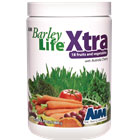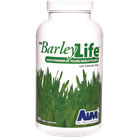Increase in breastmilk fed babies could be the cause of Rickets increase..
Breast-Fed Children At Risk.
Rickets On The Rise Among Young Children.
Mary Ann Childers.
Reporting.
(CBS) A disease doctors haven’t worried about since the late 1800s is back.
It’s rickets, and as Medical Editor Mary Ann Childers reports, one big cause of this resurgence is something that is usually considered very healthy.
Joyce Wawrzonek was always health-conscious. So when her son was born, breast feeding was an obvious choice. But when he started walking, something was very wrong.
"When Sean was 6 or 7 months old, it appeared to me that his legs were bowing more than normal. After 9 months, they started to really bow," Joyce said.
Joyce was stunned to learn Sean had rickets.
"It's a resurrection of a disease that we thought we conquered 100 years ago," said Vitamin D Expert Dr. Michael Holick.
Rickets is caused by a deficiency of Vitamin D. Without it, bones can’t absorb calcium. They become soft and bend with weight.
Doctors blame reduced exposure to sunlight, which triggers Vitamin D production in the skin, and a steady increase in breast feeding.
Although breast feeding is usually a good thing, University of Chicago Dr. Robert Rosenfield says, "A small percentage of the population just can't get enough Vitamin D from breast milk. Breast feeding is actually a culprit here."
Dr. Rosenfield says people with darker skins may be at greatest risk.
It’s critical to catch it early. Eight-month-old Ahsaan Henson was diagnosed in a routine check-up. Now he’s getting Vitamin D and calcium supplements before there’s any bond deformity.
"They caught it early enough where he'll be okay, and hopefully that won't happen," said Ahsaan’s mother, Itasha Freeman.
The outlook is not as promising for Sean Wawrzonek, who is now 8 years old. He wasn’t diagnosed until he was 5.
"Doctors have talked to me about growth hormone therapy. There is limb lengthening surgery, as well," Joyce said.
Because doctors don’t expect to see rickets, parents need to know the signs. They include bone tenderness, bowed legs, leg fractures and impaired growth. Rickets are most likely to occur during periods of rapid growth, from six months to two years.
The American Academy of Pediatrics recommends that all children, especially those who are breast fed, get daily supplements of Vitamin D beginning at two months of age until the time that they start drinking whole milk.
(© MMVI, CBS Broadcasting Inc. All Rights Reserved.)



 ORDER your AIM PRODUCTS ONLINE HERE.
ORDER your AIM PRODUCTS ONLINE HERE.

